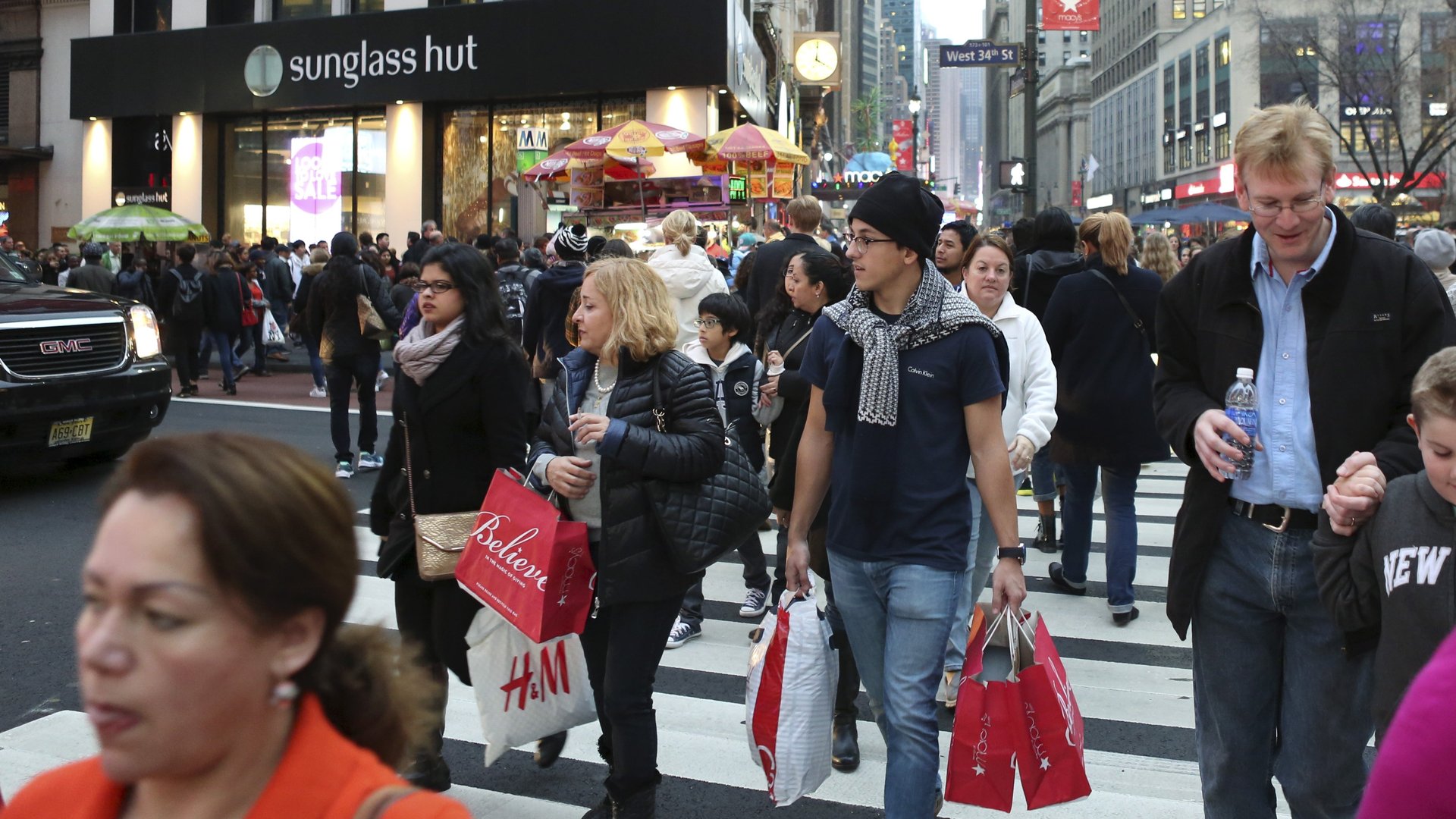Warm weather may have cost fashion retailers nearly $700 million in sales
Fashion retailers are getting the cold shoulder from consumers who haven’t needed to stock up on cold-weather gear during an unusually temperate winter season in the US and UK. This December, when most retailers bank on holiday shoppers grabbing up coats and scarves, was the warmest on record in both the US and the UK. It followed a particularly warm November that also proved messy for retailers.


Fashion retailers are getting the cold shoulder from consumers who haven’t needed to stock up on cold-weather gear during an unusually temperate winter season in the US and UK. This December, when most retailers bank on holiday shoppers grabbing up coats and scarves, was the warmest on record in both the US and the UK. It followed a particularly warm November that also proved messy for retailers.
The result over the two months, as CNN Money reported, was an estimated $572 million in lost sales for clothing retailers in the US and another $120 million lost for those in the UK. The figures come from Planalytics, a US-based consultancy that offers retailers weather-related analysis. It estimated that sales of outerwear dipped 10% in the US compared to last year, while sales of hats, scarves, and gloves in the UK fell 32%.
Macy’s this week blamed a 5% decline in its November and December sales almost entirely on the weather. “We were particularly disadvantaged by the historically warm weather in northern climate zones where both Macy’s and Bloomingdale’s are especially well-represented,” CEO Terry Lundgren said in a press release (Jan. 6). “About 80 percent of our company’s year-over-year declines in comparable sales can be attributed to shortfalls in cold-weather goods such as coats, sweaters, boots, hats, gloves and scarves.”
The department store’s sales have been beleaguered regardless of the temperature, leading it to the decision to shutter 40 stores by spring.
In comparison, J.C. Penney, which has fared much better than the rest of its department-store rivals, reported on Jan. 7 that its holiday sales were up 3.9% this year, despite contending with the same weather issues.
But Macy’s isn’t the only one pinning its woes on the unseasonable temperatures. Fast Retailing, the Japan-based owner of Uniqlo, announced on Jan. 7 that it is cutting its global operating profit forecast (paywall) for the year by 10%, citing the warm November and December conditions that kept shoppers from Asia to the US away from its fleeces and popular Heattech items. To make up for the loss, it will roll out its spring collections earlier and launch products that aren’t as “weather-sensitive,” the company said.
“It’s tough to recover from this,” Dairo Murata, an analyst at JPMorgan Securities Japan, told Bloomberg. “Winter clothing sales in November and December are the most important.”
Other brands, such as H&M and Gap, have also placed the blame for dips in performance on unseasonable weather.
Unfortunately, the months ahead don’t offer much assurance. Scientists are fairly sure El Niño will continue wreaking havoc in 2016, but they can’t say for certain exactly how. Weather this unpredictable is making it increasingly tough for retailers to plan for rainy days.